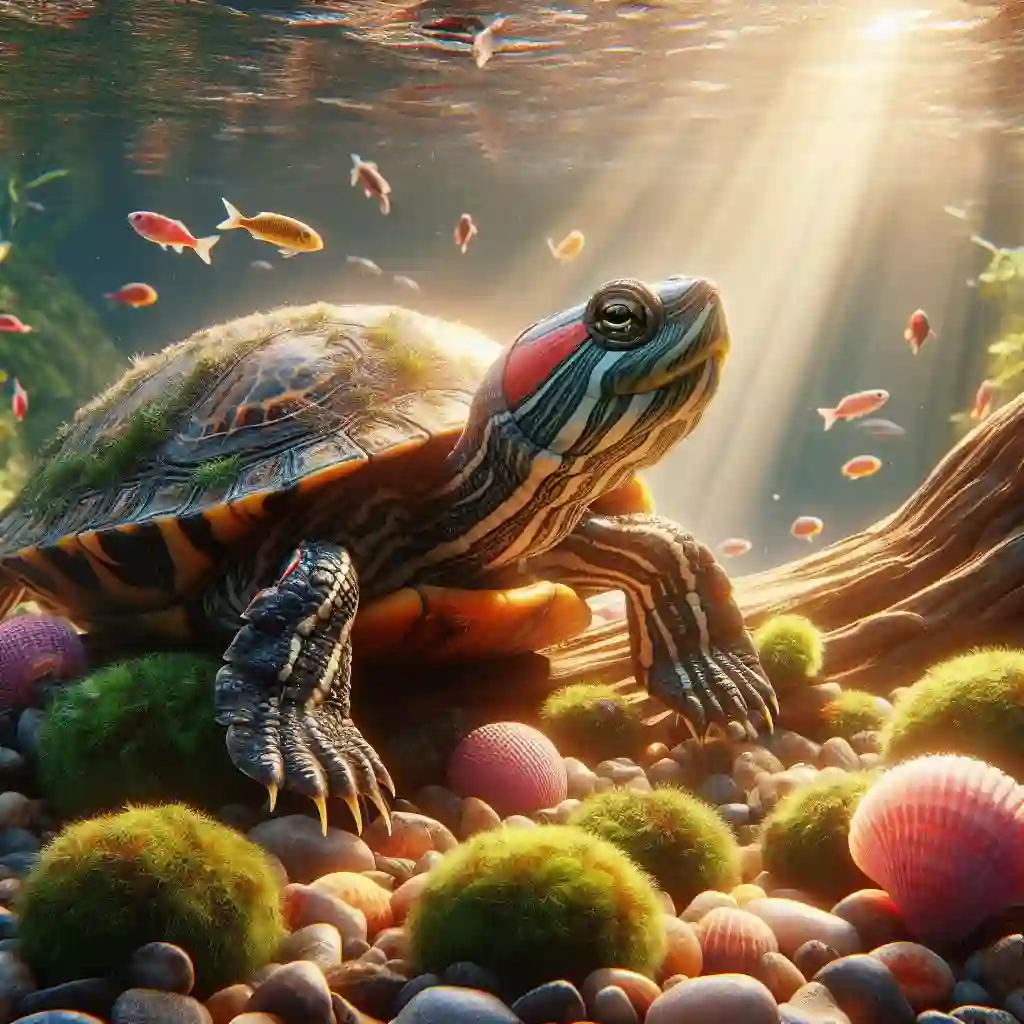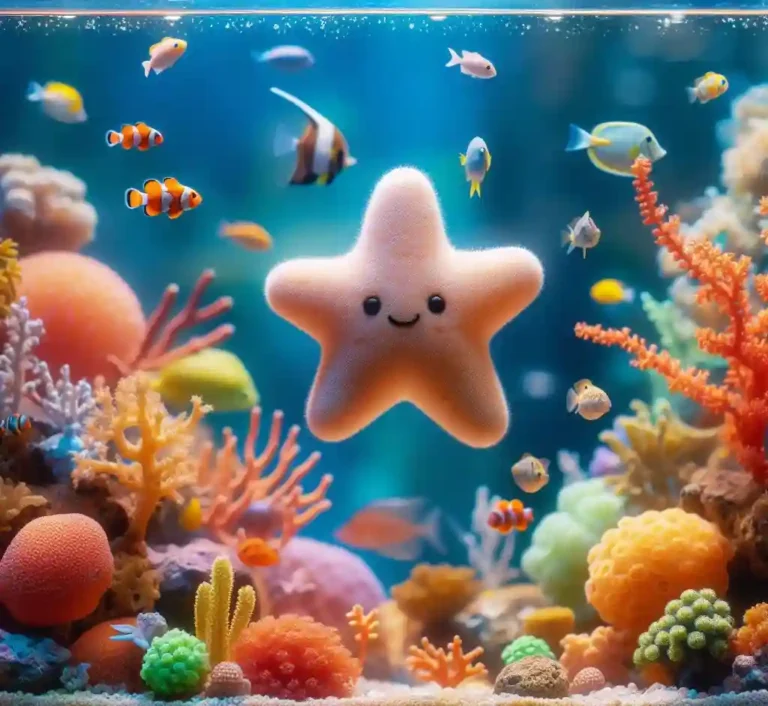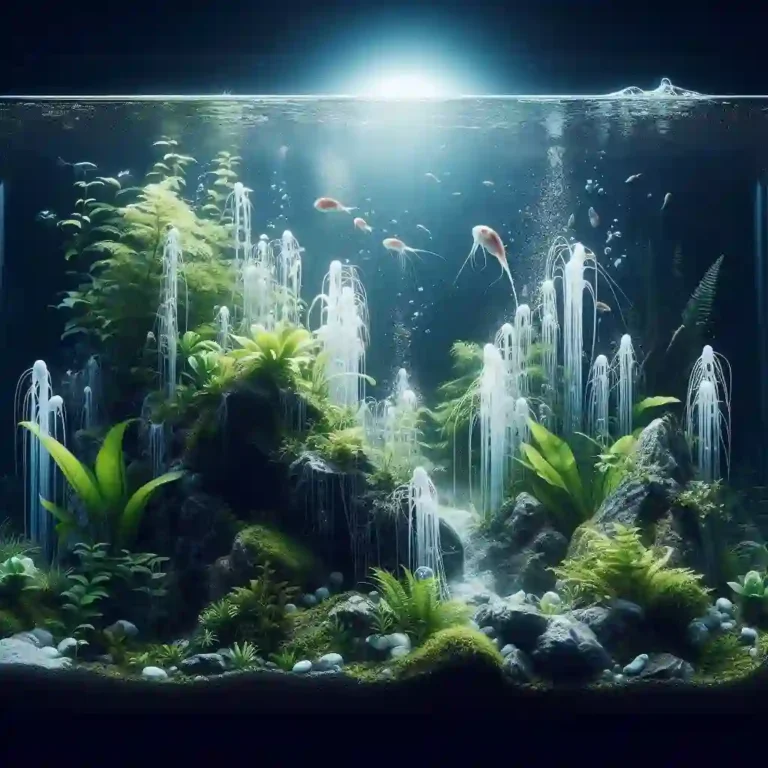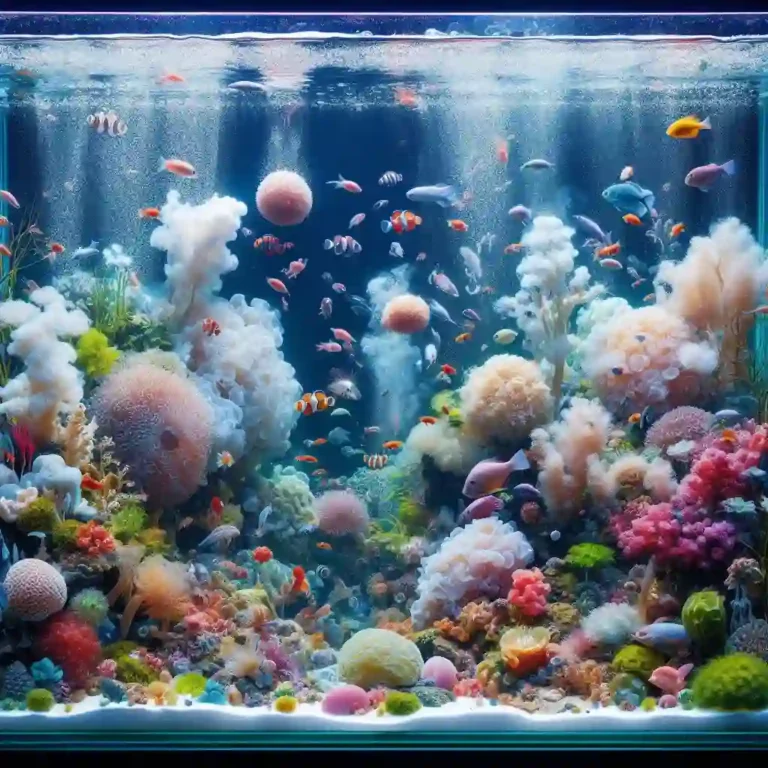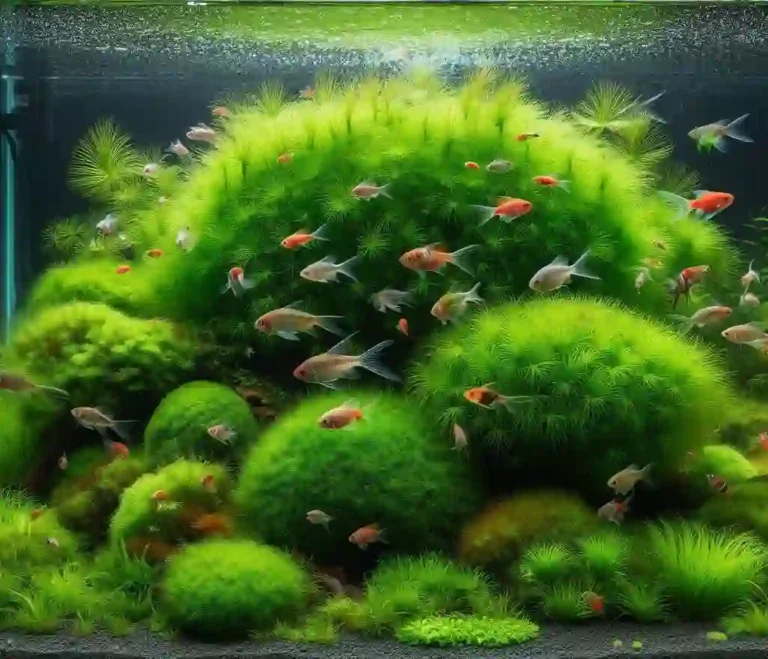What Fish Can Live with Red-Eared Slider Turtles? Creating a Balanced Aquarium
Red-eared slider turtles are fascinating creatures that require a specific environment to thrive, and choosing the right fish to cohabitate with them can be a challenge.
However, with the right selection of fish, you can create a harmonious and thriving aquarium ecosystem.
In this article, we’ll explore the best fish species that can live with red-eared slider turtles, providing you with a comprehensive guide to creating a balanced aquarium.
What Fish Can Live with Red-Eared Slider Turtles? – A Quick Guide
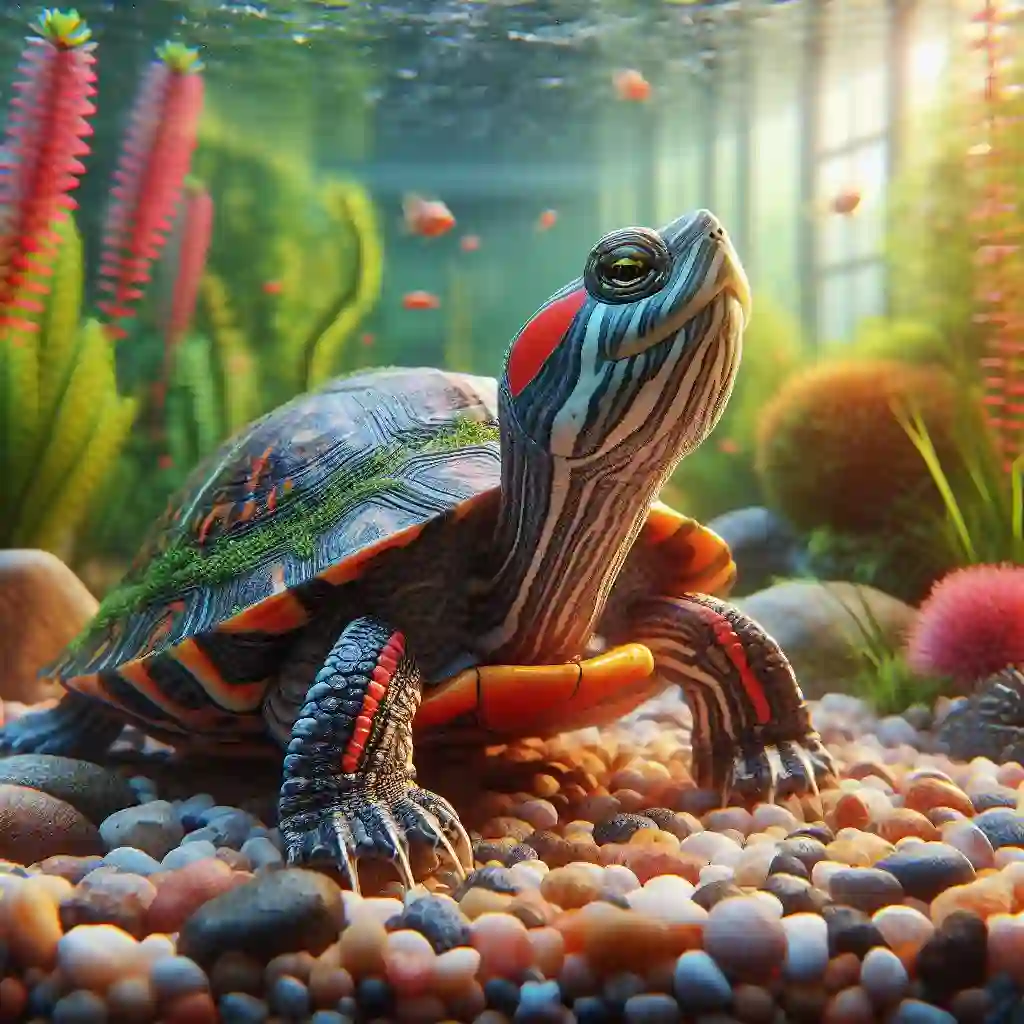
When it comes to choosing the right fish to cohabitate with your red-eared slider turtle, it’s essential to select species that are compatible with each other. Here are some guidelines to help you make the right choice:
Peaceful Fish
For a harmonious aquarium, consider the following peaceful fish species that can thrive alongside your red-eared slider turtle:
- Neon Tetras: These small, schooling fish are easy to care for and can add a pop of color to your tank.
- Harlequin Rasboras: With their vibrant orange and blue stripes, these peaceful fish are a great addition to a community tank.
- White Cloud Mountain Minnows: These hardy fish are easy to care for and can tolerate a range of water conditions.
- Corydoras Catfish: These small catfish are great for cleaning up food debris and can be kept in a community tank with your turtle.
Active Swimmers
If you’re looking for fish that can keep up with your energetic turtle, consider the following active swimmers:
- Zebra Danios: These hardy fish are easy to care for and can tolerate a range of water conditions.
- White Cloud Mountain Minnows: These fish are active swimmers that can thrive in a community tank with your turtle.
- Harlequin Rasboras: These peaceful fish are active swimmers that can add a splash of color to your tank.
Schooling Fish
For a visually stunning aquarium, consider the following schooling fish species that can thrive alongside your red-eared slider turtle:
- Neon Tetras: These small, schooling fish are easy to care for and can add a pop of color to your tank.
- Harlequin Rasboras: These peaceful fish are active swimmers that can thrive in a community tank with your turtle.
- White Cloud Mountain Minnows: These hardy fish are easy to care for and can tolerate a range of water conditions.
Tips for Choosing Fish
When selecting fish for your turtle tank, remember to:
- Research the fish species to ensure they are compatible with red-eared slider turtles.
- Choose fish that are peaceful and non-aggressive to avoid conflicts with your turtle.
- Select fish that are suitable for your tank size and water conditions.
- Avoid mixing aggressive fish species with peaceful fish to ensure a harmonious aquarium.
What Fish to Avoid
Some fish species are not suitable for a community tank with red-eared slider turtles. Avoid the following fish species:
- Betta Fish: These aggressive fish are not suitable for community tanks and can be territorial.
- Cichlids: These fish are known for their aggressive behavior and can be a threat to your turtle.
- Angelfish: These fish are sensitive to water conditions and can be difficult to care for.
- Barbs: These fish are known for their aggressive behavior and can be a threat to your turtle.
Tips for Introducing Fish to Your Turtle
When introducing fish to your turtle tank, follow these guidelines:
- Introduce fish to your turtle slowly and under close observation to ensure a smooth transition.
- Start by adding the fish to a separate tank or quarantine tank for a few weeks to ensure they are healthy and free of diseases.
- Then, slowly introduce the fish to the turtle’s tank, monitoring their behavior and watching for signs of aggression or stress.
Neon Tetras: A School of Friends for Your Turtle
When it comes to choosing tankmates for your red-eared slider turtle, neon tetras are an excellent choice. These small, schooling fish are not only visually stunning, but they’re also peaceful, easy to care for, and can thrive in a well-maintained aquarium with your turtle.
Why Neon Tetras Make Great Tankmates
- Peaceful Coexistence: Neon tetras are non-aggressive and won’t compete with your turtle for food or space. They’re happy to swim in the middle and top levels of the tank, leaving the bottom and surface areas for your turtle.
- Schooling Behavior: Neon tetras are schooling fish that thrive in groups. Keeping a school of 10-15 neon tetras can create a mesmerizing display of color and movement in your tank.
- Low Maintenance: Neon tetras are hardy and easy to care for. They’re tolerant of minor water quality fluctuations and can adapt to changes in water temperature and chemistry.
- Visual Interest: Neon tetras add a pop of color and visual interest to your tank, creating a beautiful contrast to the slower-moving, larger form of your turtle.
Tips for Keeping Neon Tetras with Red-Eared Slider Turtles
- Provide Plenty of Hiding Places: Include plants, rocks, and other decorations to provide hiding places for your neon tetras. This will help them feel secure and reduce stress.
- Maintain Good Water Quality: Regularly test and maintain good water quality to ensure the health and well-being of both your turtle and neon tetras.
- Feed Them Separately: Feed your neon tetras separately from your turtle to ensure they’re getting the nutrients they need. You can use a pipette or a small feeding ring to target feed your neon tetras.
Guppies: A Peaceful Coexistence
Guppies are another popular freshwater fish species that can make great tankmates for red-eared slider turtles. These colorful, peaceful fish are easy to care for and can add a splash of vibrancy to your aquarium.
Why Guppies Make Great Tankmates
- Peaceful Nature: Guppies are non-aggressive and won’t harass or compete with your turtle for food or space. They’re happy to swim in the middle and top levels of the tank, leaving the bottom and surface areas for your turtle.
- Easy to Care For: Guppies are hardy and adaptable, making them a great choice for beginners or experienced aquarists alike. They’re tolerant of minor water quality fluctuations and can thrive in a well-maintained aquarium.
- Colorful Addition: Guppies come in a variety of colors and fin shapes, adding a beautiful visual interest to your tank.
- Small Space Requirements: Guppies are small fish that don’t require a lot of space, making them a great choice for smaller aquariums or community tanks.
Tips for Keeping Guppies with Red-Eared Slider Turtles
- Provide Plenty of Hiding Places: Include plants, rocks, and other decorations to provide hiding places for your guppies. This will help them feel secure and reduce stress.
- Maintain Good Water Quality: Regularly test and maintain good water quality to ensure the health and well-being of both your turtle and guppies.
- Feed Them Separately: Feed your guppies separately from your turtle to ensure they’re getting the nutrients they need. You can use a pipette or a small feeding ring to target feed your guppies.
- Monitor Water Temperature: Guppies prefer warmer water temperatures (76-82°F) than red-eared slider turtles (65-75°F). Make sure to maintain a temperature range that works for both species.
Harlequin Rasboras: A Harmonious Match
Harlequin rasboras are a peaceful, shoaling fish species that can make an excellent addition to a community tank with red-eared slider turtles. These active, hardy fish are easy to care for and can add a lively, energetic presence to your aquarium.
Why Harlequin Rasboras Make Great Tankmates
- Peaceful Nature: Harlequin rasboras are non-aggressive and won’t harass or compete with your turtle for food or space. They’re happy to swim in the middle and top levels of the tank, leaving the bottom and surface areas for your turtle.
- Schooling Behavior: Harlequin rasboras are a schooling fish that thrive in groups. Keeping a school of 6-10 harlequin rasboras can create a mesmerizing display of movement and color in your tank.
- Easy to Care For: Harlequin rasboras are hardy and adaptable, making them a great choice for beginners or experienced aquarists alike. They’re tolerant of minor water quality fluctuations and can thrive in a well-maintained aquarium.
- Active Swimmers: Harlequin rasboras are active swimmers that can help to create a sense of movement and energy in your tank.
Tips for Keeping Harlequin Rasboras with Red-Eared Slider Turtles
- Provide Open Swimming Space: Harlequin rasboras are active swimmers that need open swimming space to thrive. Make sure to provide a spacious, open area in your tank for them to swim.
- Maintain Good Water Quality: Regularly test and maintain good water quality to ensure the health and well-being of both your turtle and harlequin rasboras.
- Feed Them Separately: Feed your harlequin rasboras separately from your turtle to ensure they’re getting the nutrients they need. You can use a pipette or a small feeding ring to target feed your harlequin rasboras.
- Monitor Water Temperature: Harlequin rasboras prefer warmer water temperatures (72-82°F) than red-eared slider turtles (65-75°F). Make sure to maintain a temperature range that works for both species.
Corydoras Catfish: The Perfect Bottom-Dwellers
Corydoras catfish, or cory cats, are a popular choice for community aquariums and can make an excellent addition to a tank with red-eared slider turtles. These small, armored catfish are perfect for cleaning up food debris from the substrate and can help to keep your tank clean.
Why Corydoras Catfish Make Great Tankmates
- Peaceful Nature: Corydoras catfish are non-aggressive and won’t harass or compete with your turtle for food or space. They’re happy to dwell on the bottom of the tank, leaving the middle and surface areas for your turtle.
- Good for the Tank: Corydoras catfish are excellent cleaners and can help to remove food debris and waste from the substrate, keeping your tank clean and healthy.
- Easy to Care For: Corydoras catfish are hardy and adaptable, making them a great choice for beginners or experienced aquarists alike. They’re tolerant of minor water quality fluctuations and can thrive in a well-maintained aquarium.
- Small Space Requirements: Corydoras catfish are small fish that don’t require a lot of space, making them a great choice for smaller aquariums or community tanks.
Tips for Keeping Corydoras Catfish with Red-Eared Slider Turtles
- Provide a Sandy Substrate: Corydoras catfish are burrowing fish that need a sandy substrate to dig and forage for food. Make sure to provide a deep, sandy substrate in your tank.
- Maintain Good Water Quality: Regularly test and maintain good water quality to ensure the health and well-being of both your turtle and corydoras catfish.
- Feed Them Sinking Pellets: Corydoras catfish are bottom-dwellers that need sinking pellets or tablets to feed on. Make sure to provide them with a varied diet that includes live or frozen foods.
- Monitor Water Temperature: Corydoras catfish prefer cooler water temperatures (65-75°F) than red-eared slider turtles (65-75°F). Make sure to maintain a temperature range that works for both species.
Zebra Danios: Active Swimmers for a Lively Tank
Zebra danios are an active, hardy fish species that can add a lively and energetic presence to your aquarium. With their striking horizontal stripes and active swimming behavior, they can make a great addition to a community tank with red-eared slider turtles.
Why Zebra Danios Make Great Tankmates
- Active Swimmers: Zebra danios are active swimmers that can help to create a sense of movement and energy in your tank.
- Hardy and Adaptable: Zebra danios are hardy and adaptable, making them a great choice for beginners or experienced aquarists alike. They’re tolerant of minor water quality fluctuations and can thrive in a well-maintained aquarium.
- Peaceful Nature: Zebra danios are peaceful fish that won’t harass or compete with your turtle for food or space. They’re happy to swim in the middle and top levels of the tank, leaving the bottom and surface areas for your turtle.
- Easy to Care For: Zebra danios are easy to care for and can thrive in a well-maintained aquarium with proper water changes and a balanced diet.
Tips for Keeping Zebra Danios with Red-Eared Slider Turtles
- Provide Open Swimming Space: Zebra danios are active swimmers that need open swimming space to thrive. Make sure to provide a spacious, open area in your tank for them to swim.
- Maintain Good Water Quality: Regularly test and maintain good water quality to ensure the health and well-being of both your turtle and zebra danios.
- Feed Them Varied Diets: Zebra danios are omnivores that need a varied diet that includes live or frozen foods, as well as high-quality commercial flakes or pellets.
- Monitor Water Temperature: Zebra danios prefer cooler water temperatures (65-75°F) than red-eared slider turtles (65-75°F). Make sure to maintain a temperature range that works for both species.
White Cloud Mountain Minnows: A Hardy and Peaceful Option
White Cloud Mountain minnows are a hardy and peaceful fish species that can make a great addition to a community tank with red-eared slider turtles. These small, schooling fish are easy to care for and can add a touch of elegance to your aquarium.
Why White Cloud Mountain Minnows Make Great Tankmates
- Peaceful Nature: White Cloud Mountain minnows are peaceful fish that won’t harass or compete with your turtle for food or space. They’re happy to swim in the middle and top levels of the tank, leaving the bottom and surface areas for your turtle.
- Hardy and Adaptable: White Cloud Mountain minnows are hardy and adaptable, making them a great choice for beginners or experienced aquarists alike. They’re tolerant of minor water quality fluctuations and can thrive in a well-maintained aquarium.
- Schooling Behavior: White Cloud Mountain minnows are schooling fish that thrive in groups. Keeping a school of 6-10 White Cloud Mountain minnows can create a mesmerizing display of movement and color in your tank.
- Easy to Care For: White Cloud Mountain minnows are easy to care for and can thrive in a well-maintained aquarium with proper water changes and a balanced diet.
Tips for Keeping White Cloud Mountain Minnows with Red-Eared Slider Turtles
- Provide Open Swimming Space: White Cloud Mountain minnows are active swimmers that need open swimming space to thrive. Make sure to provide a spacious, open area in your tank for them to swim.
- Maintain Good Water Quality: Regularly test and maintain good water quality to ensure the health and well-being of both your turtle and White Cloud Mountain minnows.
- Feed Them Varied Diets: White Cloud Mountain minnows are omnivores that need a varied diet that includes live or frozen foods, as well as high-quality commercial flakes or pellets.
- Monitor Water Temperature: White Cloud Mountain minnows prefer cooler water temperatures (65-75°F) than red-eared slider turtles (65-75°F). Make sure to maintain a temperature range that works for both species.
Dwarf Gouramis: A Cautionary Tale
Dwarf gouramis are a popular freshwater fish species that can be tempting to keep with red-eared slider turtles. However, they can be a challenging species to keep and may not be the best choice for a community tank.
Why Dwarf Gouramis May Not Be the Best Choice
- Aggressive Behavior: Dwarf gouramis are known to be territorial and aggressive, especially towards other fish. They may harass or even attack your turtle or other tankmates.
- Fin Nipping: Dwarf gouramis are notorious fin nippers and may attack the fins of your turtle or other fish.
- Specialized Care: Dwarf gouramis require specialized care and may need a separate tank with specific water parameters and decorations.
- Prone to Disease: Dwarf gouramis are prone to diseases such as ich and velvet, which can be challenging to treat.
Tips for Keeping Dwarf Gouramis with Red-Eared Slider Turtles (If You Must)
- Provide a Large Tank: If you still want to keep dwarf gouramis with your turtle, make sure to provide a large tank with plenty of hiding places and visual barriers.
- Introduce Them Carefully: Introduce the dwarf gouramis to the tank slowly and under close observation to ensure they are not aggressive towards your turtle or other tankmates.
- Monitor Their Behavior: Monitor the behavior of your dwarf gouramis closely and be prepared to separate them if you notice any signs of aggression or fin nipping.
- Provide a Varied Diet: Provide a varied diet that includes live or frozen foods, as well as high-quality commercial flakes or pellets, to ensure the health and well-being of your dwarf gouramis.
Avoiding Aggressive Fish: What to Avoid When Choosing Tankmates
When choosing tankmates for your red-eared slider turtle, it’s essential to avoid aggressive fish that can harass or attack your turtle. Aggressive fish can cause stress, injury, or even death to your turtle, so it’s crucial to choose peaceful and compatible tankmates.
Aggressive Fish to Avoid
- Betta Fish: Betta fish are known for their aggressive behavior and should not be kept with red-eared slider turtles.
- Cichlids: Cichlids are a diverse group of fish, but many species are aggressive and territorial, making them unsuitable for a community tank with turtles.
- Angelfish: Angelfish are known to be territorial and aggressive, especially towards other fish and turtles.
- Barbs: Some species of barbs, such as the tiger barb, can be aggressive and fin-nippers, making them unsuitable for a community tank with turtles.
Tips for Choosing Peaceful Tankmates
- Research, Research, Research: Research the fish species you’re interested in keeping with your turtle to ensure they are peaceful and compatible.
- Choose Small, Peaceful Fish: Small, peaceful fish like neon tetras, harlequin rasboras, and white cloud mountain minnows make great tankmates for red-eared slider turtles.
- Avoid Mixing Aggressive Species: Avoid mixing aggressive species with peaceful species, as this can lead to stress, injury, or even death.
- Monitor Behavior: Monitor the behavior of your fish and turtle closely, and be prepared to separate them if you notice any signs of aggression or stress.
FAQs
Q: What fish can live with red-eared slider turtles?
A: Peaceful, small fish like neon tetras, harlequin rasboras, white cloud mountain minnows, and corydoras catfish can live with red-eared slider turtles.
Q: Can I keep betta fish with my red-eared slider turtle?
A: No, betta fish are aggressive and territorial, and may harass or attack your turtle. It’s best to keep them separate.
Q: Can I keep cichlids with my red-eared slider turtle?
A: No, cichlids are aggressive and territorial, and may harass or attack your turtle. It’s best to keep them separate.
Q: How do I introduce my fish to my turtle?
A: Introduce your fish to your turtle slowly and under close observation. Start by adding the fish to a separate tank or quarantine tank for a few weeks to ensure they are healthy and free of diseases. Then, slowly introduce the fish to the turtle’s tank, monitoring their behavior and watching for signs of aggression or stress.
Q: What if my turtle eats my fish?
A: Red-eared slider turtles are carnivores and may eat small fish, especially if they are hungry or stressed. To minimize the risk of your turtle eating your fish, make sure to provide a varied diet that includes plenty of protein sources, such as commercial pellets, vegetables, and fruits. Also, choose fish that are too large for your turtle to eat, such as neon tetras or white cloud mountain minnows.
Q: Can I keep my fish and turtle in a small tank?
A: No, it’s not recommended to keep a turtle and fish in a small tank. Turtles need a lot of space to swim and bask, and small tanks can lead to water quality issues and stress on both the turtle and fish. A minimum tank size of 20 gallons is recommended for keeping turtles and fish together.
Q: How often should I feed my fish and turtle?
A: Feed your fish and turtle 2-3 times a day, only as much as they can consume within a few minutes. Overfeeding can lead to water quality issues and stress on both the turtle and fish.

Hello, I’m Aria Cooper, the heart and soul behind Swimmy Buddies. As a devoted fish aficionado, I share my aquatic adventures and expertise to inspire your own underwater explorations. 🐠🌊

